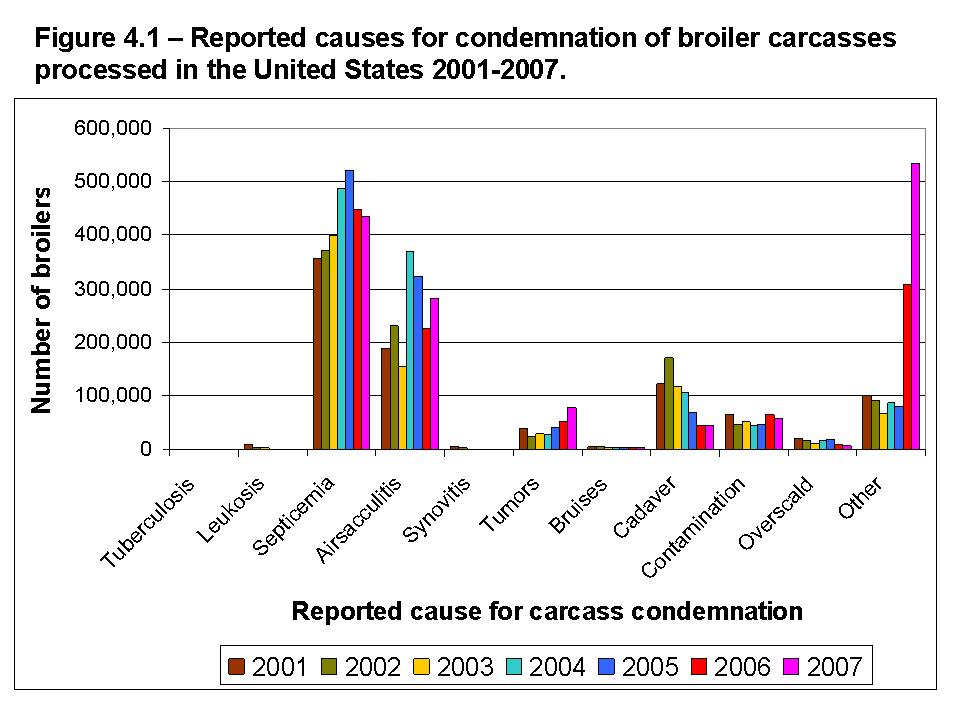Chapter 4 - Bruises
Chapter 4 - Bruises
If bruises are the reason for systemic change in a carcass, then the carcass is condemned and recorded under the bruises category. The level of bruising in broiler carcasses has declined steadily the last few years, from 0.55% of condemned carcasses in 2001 to 0.16% in 2007.
Broilers may be bruised at any time during production and even up to the time of slaughter. Minimizing bruises requires a clear understanding of when and how it occurs. Research has shown that there is a relationship between the age of the bruise and its visual appearance. As bruises age, breast bruises become darker whereas wing and drum bruises become lighter in color. With increasing bruise age, wing bruises become less red and less yellow, and drum bruises become more red and more yellow.
At the grow-out house, market-age broilers are caught by the live haul catch crew, loaded into coops and transported to the processing plant. During catching, it is important to minimize bruising because it results in carcass downgrading and yield loss. Ninety percent of bruising occurs within 12 to 24 hours before processing. Areas most frequently bruised are the breast (42%), wings (33%), and legs (25%).

